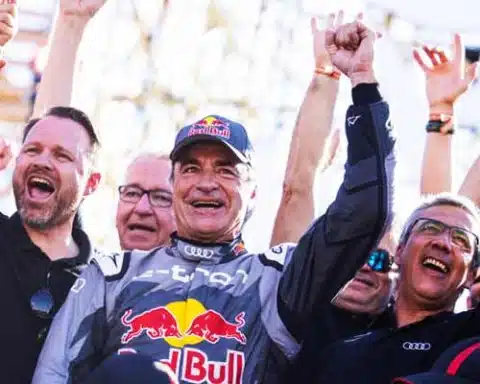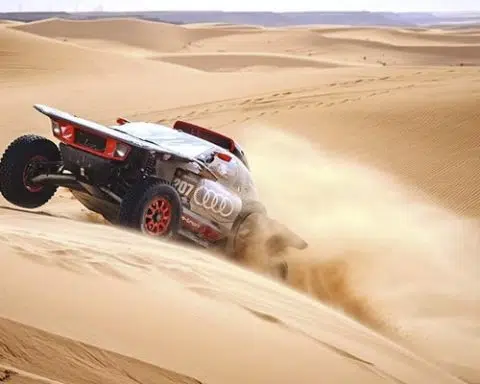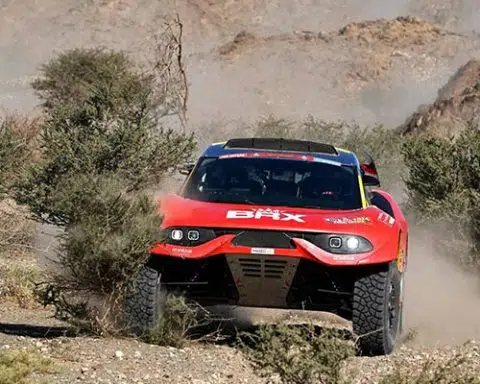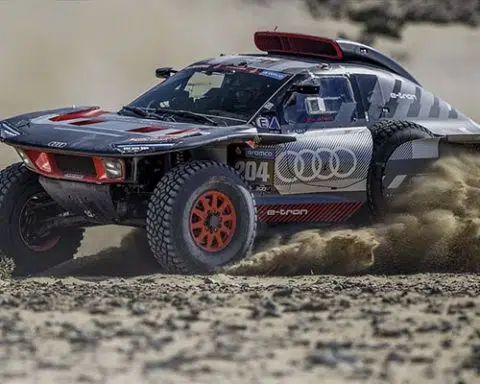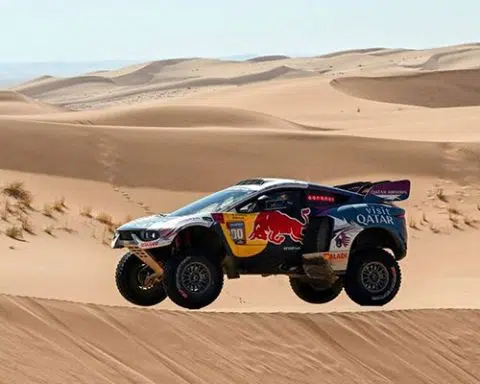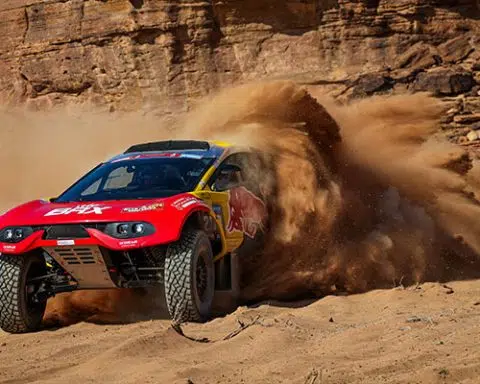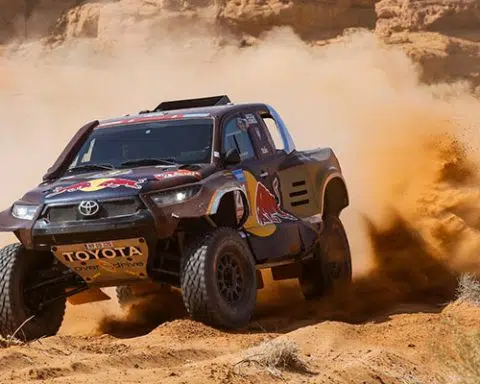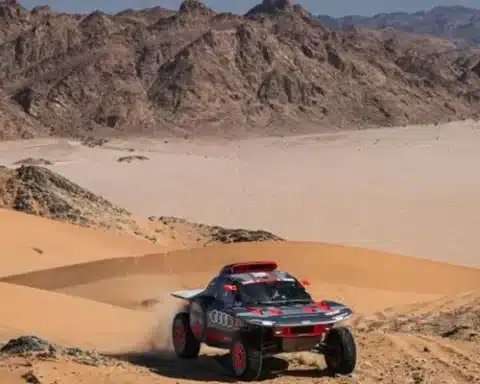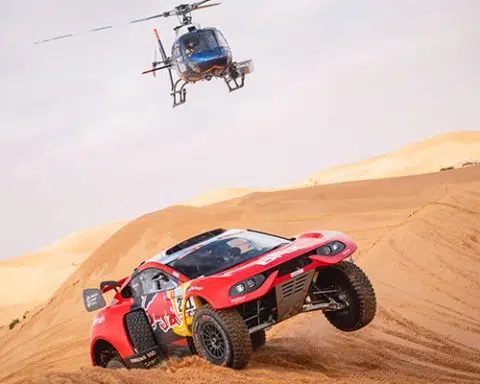2024 Dakar Rally
The Dakar Rally
(formerly known as Rallye Paris-Alger-Dakar and then Paris-Dakar) stands as a long-distance rally-raid, conceived by Thierry Sabine and inaugurated in December 1978. Ever since its inception, the event has been contested annually, except for a hiatus in 2008, spanning two to three weeks from late December to mid-January.
Initially held partly in Europe and predominantly in Africa, the competition shifted its venue to South America from 2009 to 2019 and subsequently to Saudi Arabia in 2020. The current organizer of this rally is the French sports event organizer, Amaury Sport Organisation.
In 1977, Thierry Sabine embarked on the Abidjan-Nice Rally on a motorcycle, an event organized by Jean-Claude Bertrand, which brought together traditional cars, 4x4 vehicles, motorcycles, and trucks. He got lost in the Libyan desert for three days until rescue planes saved him. Already superstitious, he caught the desert bug.
Grand Rally's Epic Inauguration
When Bertrand announced he would not organize the Abidjan-Nice race again, Sabine conceived a grand rally that would traverse Africa. He decided it would start from Paris, a city more conducive to greater notoriety and significant media coverage, and end in Dakar with a transfer via the Mediterranean.
The inaugural edition, featuring 170 teams, set off from the Trocadéro square on December 26, 1978, and concluded in Dakar on January 14, 1979. Cyril Neveu emerged as the first victor of the event, riding a Yamaha motorcycle. The event's popularity soared rapidly, with 216 vehicles taking part in 1980 and 291 in 1981.
The swashbuckling spirit of the early racers, defying the desert with limited resources, enticed some notable figures to participate, such as Thierry de Montcorgé with a Rolls-Royce and Formula 1 driver Jacky Ickx with actor Claude Brasseur aboard a Citroën CX.
Over the years, the rally evolved and professionalized, with the number of vehicles increasing significantly (603 vehicles at the starting line in 1988, with 3000 people accommodated daily in the bivouac in 2015, including competitors, organizers, sponsors, and media).
Challenging Desert Routes and Incidents
Navigating through the desert remained challenging at times; when the harmattan, an east wind from the Sahara, blew, tracks were erased, and landmarks disappeared.
The route varied from year to year: for several years, it was called the Paris-Alger-Dakar as participants set sail from Sète to arrive in Algiers and then cross the Algerian Sahara.
In fact, the finish line was not always in Dakar in some years: notable editions include the 1992 rally, Paris-Le Cap, the 1994 edition, Paris-Dakar-Paris, the 2000 rally, Dakar-Le Caire, or the 2002 edition, Arras-Madrid-Dakar.
Various fatal accidents marred the rally's course, affecting competitors, support personnel, and local spectators. The 1986 Dakar Rally was marred by the death of Thierry Sabine in a helicopter accident. Daniel Balavoine, who accompanied him, also perished on that day, along with the young Swiss driver François-Xavier Bagnoud, radio technician Jean-Paul Le Fur, and journalist Nathalie Odent.
The singer was not participating in the race that year but was involved in the humanitarian initiative "Paris-Dakar, Pari du Coeur," aimed at installing hydraulic water pumps in African villages, making use of the rally's logistical support.
Terror Threats Alter Dakar
Several Dakar editions were disrupted by terrorist threats, leading to the cancellation of certain stages and route changes. This was the case in 2000 when an airlift consisting of three Antonov An-124 planes was established between Niamey and Sebha, Libya, to avoid crossing Niger, resulting in a four-day interruption of the event. The operation reportedly cost around 30 million French Francs, equivalent to just over 4.5 million euros.
Due to security concerns in Mauritania, which was scheduled to host 8 stages, the 2008 Dakar edition was canceled. Following the assassination of four French citizens near Aleg, Mauritania, on December 24, 2007, Laurent Wauquiez, spokesperson for the French government, strongly advised French nationals against traveling to the country.
On the eve of the departure from Lisbon on January 4, 2008, the organizers announced the Dakar's cancellation, despite the presence of 2,500 people already in Portugal to participate in the rally.
Mauritania had planned to mobilize 4,000 police officers to ensure security, but the risks associated with the Al-Qaida in the Islamic Maghreb branch prompted the organizers to heed the French government's recommendations.
Diverse Dakar Rally Categories
The Dakar Rally comprises five main categories: motorcycles, cars, trucks, quads (since 2009), and SSVs (since 2017).
The motorcycle category includes various subcategories, such as those under 450cc, the marathon category (production motorcycles), and quads, which became a separate category in 2009.
The car category initially featured three subcategories: T1 (production vehicles), T2 (modified production vehicles), and T3 (prototype vehicles). Trucks were initially included in the car category, but they have had their own category since 2000. Prototype trucks were banned in the late 1980s due to high speeds that led to several serious accidents.
Several manufacturers use the Dakar Rally both as a testing ground and a showcase to demonstrate the durability of their vehicles, although the vehicles they enter are significantly modified from their production counterparts.
Initially, a few automakers participated with limited resources, often through private drivers, such as Land Rover, Renault, Volkswagen, Mercedes, and Lada, among others.
Subsequently, manufacturers entered through factory teams with substantial resources, including Porsche, Mitsubishi, Peugeot, and Citroën. This led to an increase in costs and performance and resulted in the prohibition of T3 prototypes for factory teams in 1997.
Category Changes and Rule Adjustments
T3 prototypes could still be entered by private teams. The merger of T2 and T3 categories in 2002 marked the return of factory prototypes. Finally, in 2006, there was a swap between T1 (now prototypes) and T2 (now production vehicles) categories.
In the 1980s, in response to the extravagant means employed by factory teams and the risks it posed to amateurs who could not keep up, organizers decided to ban aerial assistance (Porsche, for instance, had a significant fleet of helicopters at its disposal), radio routing, and limit the use of GPS.
Private teams, some more affluent than others, can also contend for top positions. Jean-Louis Schlesser, after ending his career in the World Sports Car Championship, built his own buggies with support from manufacturers like Seat, Renault, and later Ford. He won the Dakar Rally in 1999 and 2000 in the car category.
Leading Manufacturers in Motorsports
KTM, Yamaha, Honda, and Husqvarna currently compete officially in the motorcycle category. KTM, Yamaha, and Honda are among the most successful manufacturers in the rally, alongside BMW, which formerly owned Husqvarna. In the car category, following the withdrawal of Mitsubishi, which holds the record with 12 victories, in 2009, and Volkswagen in 2011, there are no longer any manufacturers officially present in the top category.
However, the X-Raid team, owned by Sven Quandt, a member of the BMW family, receives technical support from the German manufacturer for its engines. It's worth mentioning Toyota South Africa, which was joined by Ford South Africa in 2014. Toyota is officially present in the production vehicle category.
Among the trucks, notable manufacturers include KAMAZ, Iveco, Tatra, and DAF, which together account for the majority of wins in the truck category since 1979.
